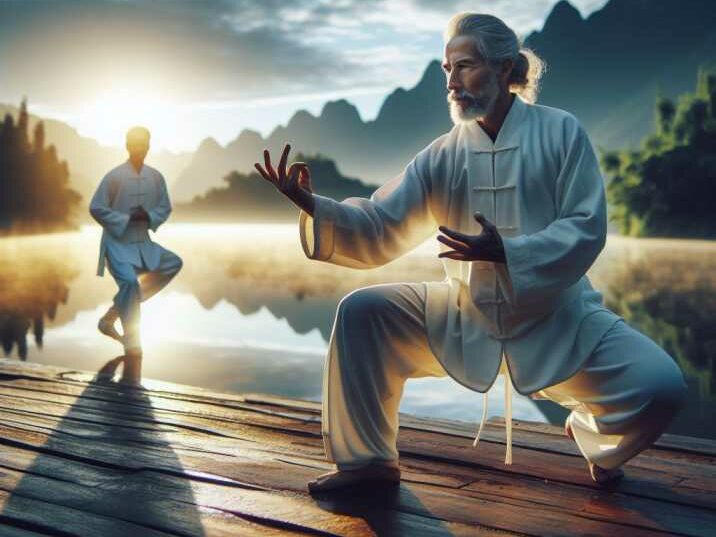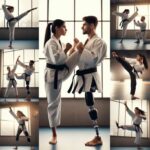Introduction
Table of Contents
Kung Fu, with its roots deeply embedded in Chinese culture, is a multifaceted martial art that has captured the fascination of people worldwide. From the fluid movements of Tai Chi to the powerful strikes of Shaolin Kung Fu, the spectrum of different styles of Kung Fu is as diverse as it is captivating. In this comprehensive guide, we delve into the essence of Kung Fu and unravel the various styles that enrich its tradition.

A Brief History of Kung Fu
Kung Fu, also known as Wushu or Chinese martial arts, has a rich history dating back centuries. Originating in the Shaolin Temple in Henan Province, China, Kung Fu evolved as a means of self-defense and physical conditioning for monks. Over time, it spread beyond the confines of the temple walls, flourishing into a widespread martial art practiced by people of all ages and backgrounds.
Understanding the Philosophy Behind Kung Fu
At the heart of Kung Fu lies a profound philosophy that extends far beyond mere physical combat. Central to this philosophy is the concept of harmony between mind, body, and spirit. Practitioners of Kung Fu strive for balance and inner peace, seeking to cultivate not only their martial prowess but also their moral character and self-discipline.
The Main Categories of Kung Fu Styles
Kung Fu encompasses a vast array of styles, each with its own unique characteristics and techniques. These styles can be broadly categorized into four main classifications: Shaolin, Wudang, Emei, and Shaolin Buddhist.
| Style | Origin | Distinctive Features |
|---|---|---|
| Shaolin Kung Fu | Shaolin Temple | Dynamic movements, emphasis on agility and speed |
| Wudang Kung Fu | Wudang Mountains | Fluid, Tai Chi-like motions, focus on internal energy cultivation |
| Emei Kung Fu | Emei Mountain | Circular movements, utilization of weapons such as swords |
| Shaolin Buddhist Kung Fu | Shaolin Temple | Incorporation of Buddhist philosophy, emphasis on meditation |
Exploring Notable Styles of Kung Fu
Shaolin Kung Fu:
Originating from the legendary Shaolin Temple, this style is renowned for its acrobatic kicks, rapid punches, and intricate hand forms. Practitioners of Shaolin Kung Fu undergo rigorous training, mastering both empty-hand techniques and weapons such as the staff and broadsword.
Tai Chi Chuan:
Tai Chi, often referred to as “moving meditation,” is characterized by slow, graceful movements that flow seamlessly from one to the next. Originating from the Wudang Mountains, Tai Chi focuses on harnessing internal energy, promoting relaxation, and improving balance and flexibility.
Wing Chun:
Made famous by its association with Bruce Lee, Wing Chun is a practical and efficient style that emphasizes close-range combat and simultaneous defense and attack. With its emphasis on sensitivity and quick reflexes, Wing Chun is suitable for practitioners of all ages and physical abilities.
Baguazhang:
Known for its circular footwork and evasive maneuvers, Baguazhang is a highly sophisticated style that emphasizes constant movement and adaptability. Originating from the Emei Mountain, Baguazhang practitioners utilize palm strikes, joint locks, and throws to overcome opponents.
The Influence of Kung Fu in Popular Culture
Kung Fu has left an indelible mark on popular culture, inspiring countless films, television shows, and literary works. From classic martial arts epics like “Enter the Dragon” to modern interpretations such as “Crouching Tiger, Hidden Dragon,” Kung Fu continues to captivate audiences with its mesmerizing choreography and timeless themes of honor, courage, and self-discovery.
Embracing the Way of Kung Fu
Whether you seek physical fitness, self-defense skills, or a deeper understanding of Chinese culture, Kung Fu offers a path of discovery and growth. By exploring the diverse styles and philosophies within the realm of Kung Fu, practitioners can embark on a journey of self-improvement and personal transformation that transcends the boundaries of time and culture. So, why wait? Take the first step on your Kung Fu journey today and unlock the endless possibilities that await!
Table summarizing information about different styles of Kung Fu:
| Style | Origin | Distinctive Features |
|---|---|---|
| Shaolin Kung Fu | Shaolin Temple | Dynamic movements, agility, speed, extensive weapon use |
| Tai Chi Chuan | Wudang Mountains | Slow, graceful movements, focus on internal energy |
| Wing Chun | Guangdong Province | Close-range combat, simultaneous defense and attack |
| Baguazhang | Emei Mountain | Circular footwork, evasive maneuvers, palm strikes |
| Jeet Kune Do | United States | Created by Bruce Lee, emphasizes practicality and adaptability |
| Hung Gar | Southern China | Powerful stances, strong hand techniques, low kicks |
| Northern Praying Mantis | Shandong Province | Mimics movements of praying mantis, rapid strikes |
| Xingyi Quan | Henan Province | Five elements theory, explosive power, linear movements |
| Baji Quan | Hebei Province | Explosive strikes, emphasis on short-range power |
| Liuhebafa | Fujian Province | Internal martial art, focuses on coordination and balance |
This table provides a concise overview of some of the most prominent styles of Kung Fu, highlighting their origins and distinctive characteristics.
Conclusion
In conclusion, the world of Kung Fu is a captivating tapestry woven with a myriad of styles, each offering its own unique blend of tradition, philosophy, and technique. From the dynamic movements of Shaolin Kung Fu to the meditative grace of Tai Chi, practitioners of all ages and backgrounds can find a style that resonates with their goals and aspirations.
As you embark on your journey into the realm of Kung Fu, remember that the path to mastery is not one of instant gratification but rather one of dedication, perseverance, and self-discovery. Whether you seek physical fitness, mental clarity, or spiritual growth, Kung Fu offers a holistic approach to personal development that extends far beyond the confines of the dojo.
By embracing the principles of discipline, respect, and humility, you can unlock the true potential of Kung Fu and embark on a transformative journey that will enrich your life in ways you never thought possible. So, take the first step, immerse yourself in the rich tradition of Chinese martial arts, and let the journey begin.
FAQs (Frequently Asked Questions)
- Is Kung Fu only for people who are already fit and flexible? Not at all! Kung Fu is suitable for individuals of all fitness levels and body types. With regular practice and dedication, you can improve your strength, flexibility, and overall physical fitness.
- Do I need any special equipment to practice Kung Fu? While some styles of Kung Fu may require specific training equipment such as wooden dummies or weapons, many practitioners begin their journey with nothing more than comfortable clothing and a willingness to learn.
- How long does it take to become proficient in Kung Fu? The journey to proficiency in Kung Fu is a highly individualized one and depends on various factors such as your dedication, frequency of practice, and natural aptitude. With consistent training and guidance from a qualified instructor, you can expect to see significant progress over time.
- Is Kung Fu only about physical combat, or does it have a spiritual component as well? While Kung Fu is primarily known for its physical techniques, it also encompasses a deep spiritual and philosophical dimension. Many styles of Kung Fu emphasize the cultivation of inner harmony, mental discipline, and ethical values.
- Can children learn Kung Fu, or is it only for adults? Children can certainly learn Kung Fu! Many martial arts schools offer specialized programs tailored to the needs and abilities of young practitioners. Kung Fu can help children develop valuable life skills such as discipline, respect, and self-confidence, all while having fun and staying active.


